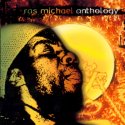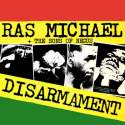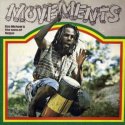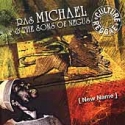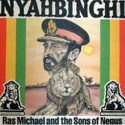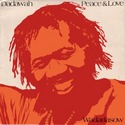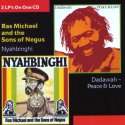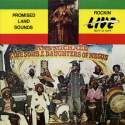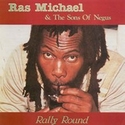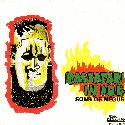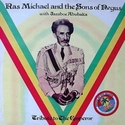 The drumming, which usually involves three hand drums of different sizes
(the bass, the funde and the repeater), exercised an influence on early
recorded Jamaican music – the Folks Brothers' 1960 hit, "Oh Carolina",
for instance. However, though the drumming style – and even the master
Rasta drummer Count Ossie – appeared on major hits in the 1960s,
nyahbinghi music was heard too sporadically to be considered a
commercial trend until the computerized 1990s, when hard-core ragga
deejays like Capleton, Shabba Ranks and Buju Banton chose to mouth
'cultural' concerns over rhythms that included traditional rastafarian
percussion.
The drumming, which usually involves three hand drums of different sizes
(the bass, the funde and the repeater), exercised an influence on early
recorded Jamaican music – the Folks Brothers' 1960 hit, "Oh Carolina",
for instance. However, though the drumming style – and even the master
Rasta drummer Count Ossie – appeared on major hits in the 1960s,
nyahbinghi music was heard too sporadically to be considered a
commercial trend until the computerized 1990s, when hard-core ragga
deejays like Capleton, Shabba Ranks and Buju Banton chose to mouth
'cultural' concerns over rhythms that included traditional rastafarian
percussion.
 The one period in which Rastafarian ensembles regularly made records
that were untampered by commercial considerations was the roots era of
the 1970s. Though serious musicologists had made occasional field
recordings of nyahbingi sessions, the first album to give the music the
studio time it deserved, while remaining as true to its original forms
as possible, was the triple LP set Grounation, from Count Ossie
& the Mystic Revelation of Rastafari.
The MRR was an aggregation of
accomplished musicians which brought together both Count Ossie's
African-style hand drummers and the horns and bass of tenor-sax man
Cedric Brooks's Mystics band. This historic set has never been
superseded, but the establishment of Rastafari as the dominant reggae
ideology in the mid-1970s, plus the emergence of an audience for reggae
albums that were more than collections of hit singles, created a climate
in which more sets of nyahbingi-based music could be produced.
The one period in which Rastafarian ensembles regularly made records
that were untampered by commercial considerations was the roots era of
the 1970s. Though serious musicologists had made occasional field
recordings of nyahbingi sessions, the first album to give the music the
studio time it deserved, while remaining as true to its original forms
as possible, was the triple LP set Grounation, from Count Ossie
& the Mystic Revelation of Rastafari.
The MRR was an aggregation of
accomplished musicians which brought together both Count Ossie's
African-style hand drummers and the horns and bass of tenor-sax man
Cedric Brooks's Mystics band. This historic set has never been
superseded, but the establishment of Rastafari as the dominant reggae
ideology in the mid-1970s, plus the emergence of an audience for reggae
albums that were more than collections of hit singles, created a climate
in which more sets of nyahbingi-based music could be produced.
 The most noteworthy of these were by Ras Michael
& the Sons of Negus and
the Light of Saba. The latter group was led by
Cedric Brooks, who had
played tenor sax, clarinet and flute on Grounation, as well as being its
musical arranger. Ras Michael (b. Michael George Henry) was a drummer
and singer who had been leading groups of Rastafarian musicians since at
least the mid-1960s, and had spasmodically released music on his own
Zion Disc label. The albums from both ensembles of percussionists, horn
players, chanters and guitarists brought the music of Rastafarian
meetings closer to the commercial reggae mainstream, initiating new
musical hybrids that foreshadowed the concept of 'world music'. In
reverse of the usual Jamaican practice, little music from either group
appeared only on 45, but each produced at least one outstanding single.
The Light of Saba's atmospheric instrumental "Lambs Bread Collie",
featuring the trombone of Ronald 'Nambo' Robinson (also associated with
the MRR), appeared in 1978 on their own label, and has become their most
sought-after single track. Ras Michael's "Good People", a Studio One
release from the same period, sounds as if the regular Brentford Road
session musicians of the time were employed, but is no less inspired
than previous work with the Mystic Revelation.
The most noteworthy of these were by Ras Michael
& the Sons of Negus and
the Light of Saba. The latter group was led by
Cedric Brooks, who had
played tenor sax, clarinet and flute on Grounation, as well as being its
musical arranger. Ras Michael (b. Michael George Henry) was a drummer
and singer who had been leading groups of Rastafarian musicians since at
least the mid-1960s, and had spasmodically released music on his own
Zion Disc label. The albums from both ensembles of percussionists, horn
players, chanters and guitarists brought the music of Rastafarian
meetings closer to the commercial reggae mainstream, initiating new
musical hybrids that foreshadowed the concept of 'world music'. In
reverse of the usual Jamaican practice, little music from either group
appeared only on 45, but each produced at least one outstanding single.
The Light of Saba's atmospheric instrumental "Lambs Bread Collie",
featuring the trombone of Ronald 'Nambo' Robinson (also associated with
the MRR), appeared in 1978 on their own label, and has become their most
sought-after single track. Ras Michael's "Good People", a Studio One
release from the same period, sounds as if the regular Brentford Road
session musicians of the time were employed, but is no less inspired
than previous work with the Mystic Revelation.
 Nyahbinghi (sometimes spelt 'nyabhingi' or 'nyabingi') music in its
purest form is the music played at Rastafarian meetings or
'grounations', and is based around a style of relentless drumming and
chanting. Sometimes a guitar or horns are used (ska musicians such as
Johnny 'Dizzy' Moore and Don Drummond developed their approaches at such
gatherings), but no amplification at all is employed.
Nyahbinghi (sometimes spelt 'nyabhingi' or 'nyabingi') music in its
purest form is the music played at Rastafarian meetings or
'grounations', and is based around a style of relentless drumming and
chanting. Sometimes a guitar or horns are used (ska musicians such as
Johnny 'Dizzy' Moore and Don Drummond developed their approaches at such
gatherings), but no amplification at all is employed.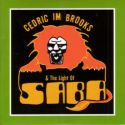

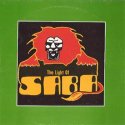
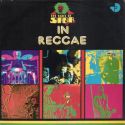
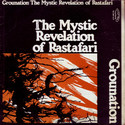
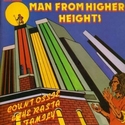

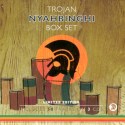


 The one period in which Rastafarian ensembles regularly made records
that were untampered by commercial considerations was the roots era of
the 1970s. Though serious musicologists had made occasional field
recordings of nyahbingi sessions, the first album to give the music the
studio time it deserved, while remaining as true to its original forms
as possible, was the triple LP set Grounation, from
The one period in which Rastafarian ensembles regularly made records
that were untampered by commercial considerations was the roots era of
the 1970s. Though serious musicologists had made occasional field
recordings of nyahbingi sessions, the first album to give the music the
studio time it deserved, while remaining as true to its original forms
as possible, was the triple LP set Grounation, from 
